Otoplasty in Pune
Search and Compare the Best Clinics and Doctors at the Lowest Prices for Otoplasty in Pune

Find the best clinics for Otoplasty in Pune
With Medijump you can browse 3 facilities offering Otoplasty procedures in Pune. The cheapest price available is $683 in Delhi
Otoplasty in India
Price: $ 683
Otoplasty in Delhi
Price: $ 683
Otoplasty in Bangalore
Price: $ 700
Egypt offers the best prices Worldwide
Price: $ 100
From 168 verified reviews
Koraim Mohamed, 23 September 2020
Excellent hospital and provides very good services , Azhar from front desk was very helpful and cooperative
Inamdar Multispeciality Hospital Pune, can be found in Thite Nagar, Pune, India and offers its patients Otoplasty procedures as well as 39 other procedures, across 6 different procedure categories. At present, there is no pricing information for Otoplasty procedures at Inamdar Multispeciality Hospital Pune. The pricing information is quite specialised, so it's only available on request, and the average price is around $1,100. A small team of medical professionals undertake all procedures at the Hospital, with 3 in total, and Inamdar Multispeciality Hospital Pune is not accredited by any recognised accreditations institutions.
Dhanwantari's Chrysalis, located in Thite Nagar, Pune, India offers patients Otoplasty procedures among its total of 37 available procedures, across 4 different specialties. Currently, there's no pricing information for Otoplasty procedures at Dhanwantari's Chrysalis, as all prices are available on request only, whilst the national average price is approximately $1,100. There are many specialists available at the Hospital, with 4 in total, and they are accredited by IMA - Indian Medical Association
Compare Before & After Photos of _procedure_photos.phpOtoplasty
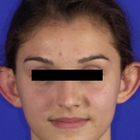
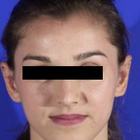
Front view
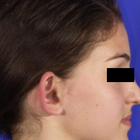
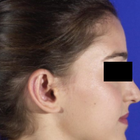
Full-side view
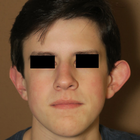

Front view

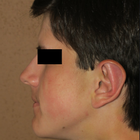
Full-side view
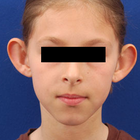
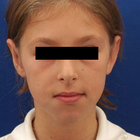
Front view
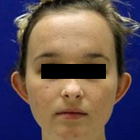
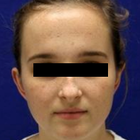
Front view
WHY US?
At Medijump, we're making medical easy. You can search, compare, discuss, and book your medical all in one place. We open the door to the best medical providers worldwide, saving you time and energy along the way, and it's all for FREE, no hidden fees, and no price markups guaranteed. So what are you waiting for?

Free

Best Price

Widest Selection

Risk-Free
What you need to know about Otoplasty in Pune

Otoplasty, also referred to as cosmetic ear surgery, is a type of cosmetic procedure to change the size, shape, or position of the ear. It is performed on the visible part of the outer ear, called auricle. Some people choose to have the surgery to correct odd-shaped ears due to an injury or birth defect. Others have it because they are concerned with how their ears protrude too far from their head. Otoplasty can be performed at any age after the ears have reached their full size, generally after age 5. In some cases, the surgery may be done as early as age 3.
There are several types of otoplasty. The following are the most common:
- Ear pinning draws the ears closer to the head. It is usually done on people whose ears stick out too far from their head.
- Ear augmentation is ideal for individuals whose ears are small or have not completely developed. This type of otoplasty can increase the size of the outer ear.
- Ear reduction is usually done on people with macrotia, which is a condition when the ears are larger than normal. Otoplasty can reduce the size of the ears.
What does a Otoplasty Procedure Involve?
Otoplasty is typically carried out under local anesthesia with a sedative, so you will be awake but you will not feel any pain. In some cases, general anesthesia may be used, typically for younger children.
The techniques used by your surgeon vary based on the type of otoplasty you are having. In general, your surgeon makes an incision either within the inner creases of your ears or on the backs of your ears. Then, your surgeon manipulates the tissue of the ear, which may include removal of cartilage or skin, grafting of cartilage to the ear, or folding and shaping of cartilage using permanent stitches. Once your surgeon is done correcting the shape, size, and position of your ears, the incisions are closed with stitches.
How Long Should I Stay in Pune for a Otoplasty Procedure?
Otoplasty can take between 1 and 3 hours to perform, depending on the complexity and the specifics of the procedure. It is typically done as an outpatient procedure, which means you can leave the hospital on the same day. It is recommended that you stay in Pune for 7 more days for follow-up checkups and removal of stitches.
What's the Recovery Time for Otoplasty Procedures in Pune?
The recovery period may vary from one person to another. You may experience numbness for several weeks, and mild bruising for about 2 weeks. For several months, your ears may feel stiff and sore.
You should be able to go back to work and resume your normal activities, including exercise, within one to two weeks after surgery. Physical contact sports, such as rugby, football, or judo, should be avoided for at least 3 months. You should also avoid swimming for up to 8 weeks following your otoplasty.
What sort of Aftercare is Required for Otoplasty Procedures in Pune?
Your surgeon will provide post-operative instructions. Make sure to follow the instructions carefully to promote smooth and quick recovery. You should rest with your head elevated on 2-3 pillows to minimize swelling. It is recommended that you eat a light, soft, and cool diet for several days. Take pain medication as prescribed by your doctor. Avoid sleeping on your side or rub the incisions to keep pressure off your ears. Consider wearing shirts with loose-fitting collars or button-down shirts.
What's the Success Rate of Otoplasty Procedures in Pune?
Otoplasty is a safe and effective procedure, with high satisfaction rates. More than 90% of people who had the procedure claimed to be extremely happy with the results. Note that it may take some time for the result to be fully visible.
While it is a safe procedure, you still need to be aware of possible risks and complications that otoplasty carries. These include bleeding, hematoma formation, infection of the skin, infection of the cartilage of the ear, permanent or temporary numbness around the affected area, scar or keloid formation, unfavorable results, prolonged pain, narrowing of the external ear canal, impaired healing, changes in skin sensation, asymmetry, and overcorrection.
Are there Alternatives to Otoplasty Procedures in Pune?
There are not many viable alternatives to otoplasty as of yet. One of the most popular alternatives is nonsurgical otoplasty, which does not require any incisions. The procedure uses special sutures to pin the ears back and achieve a more symmetrical look. These sutures are woven into the ears and will remain in place permanently. They are also virtually invisible, so the results will look natural.
For babies under three months old with prominent ears, ear-molds can be taped to their ears to reshape the ears without surgery. This type of treatment typically takes about six to eight weeks.
What Should You Expect Before and After the Procedure
Before otoplasty, you may have prominent or large ears or other deformity caused by an injury or birth defect that bothers you. Some people also feel self-conscious and embarrassed by the shape, size, and position of their ears. After the procedure, your ears will be corrected. Small or underdeveloped ears will be augmented to increase the size, the size of large ears will be reduced, and prominent ears will be drawn closer to the head. Your appearance will improve and you may feel more confident.
Whilst the information presented here has been accurately sourced and verified by a medical professional for its accuracy, it is still advised to consult with your doctor before pursuing a medical treatment at one of the listed medical providers
No Time?
Tell us what you're looking for and we'll reachout to the top clinics all at once
Enquire Now

Popular Procedures in Pune
Prices Start From $28

Prices Start From $1,945

Prices Start From $120

Prices Start From $275

Recommended Medical Centers in Pune for Otoplasty

- Interpreter services
- Translation service
- Religious facilities
- Medical records transfer
- Medical travel insurance
- Health insurance coordination
- TV in the room
- Safe in the room
- Phone in the room
- Private rooms for patients available

- Interpreter services
- Translation service
- Religious facilities
- Medical records transfer
- Medical travel insurance
- Health insurance coordination
- TV in the room
- Safe in the room
- Phone in the room
- Private rooms for patients available

- Interpreter services
- Translation service
- Religious facilities
- Medical records transfer
- Medical travel insurance
- Health insurance coordination
- TV in the room
- Safe in the room
- Phone in the room
- Private rooms for patients available

- Interpreter services
- Translation service
- Religious facilities
- Medical records transfer
- Medical travel insurance
- Health insurance coordination
- TV in the room
- Safe in the room
- Phone in the room
- Private rooms for patients available

- Interpreter services
- Translation service
- Religious facilities
- Medical records transfer
- Medical travel insurance
- Health insurance coordination
- TV in the room
- Safe in the room
- Phone in the room
- Private rooms for patients available

- Interpreter services
- Translation service
- Religious facilities
- Medical records transfer
- Medical travel insurance
- Health insurance coordination
- TV in the room
- Safe in the room
- Phone in the room
- Private rooms for patients available

- Interpreter services
- Translation service
- Religious facilities
- Medical records transfer
- Medical travel insurance
- Health insurance coordination
- TV in the room
- Safe in the room
- Phone in the room
- Private rooms for patients available

- Interpreter services
- Translation service
- Religious facilities
- Medical records transfer
- Medical travel insurance
- Health insurance coordination
- TV in the room
- Safe in the room
- Phone in the room
- Private rooms for patients available

- Interpreter services
- Translation service
- Religious facilities
- Medical records transfer
- Medical travel insurance
- Health insurance coordination
- TV in the room
- Safe in the room
- Phone in the room
- Private rooms for patients available

- Interpreter services
- Translation service
- Religious facilities
- Medical records transfer
- Medical travel insurance
- Health insurance coordination
- TV in the room
- Safe in the room
- Phone in the room
- Private rooms for patients available
Otoplasty in and around Pune
About Pune
Pune is a city in the Indian state of Maharashtra. With an estimated population of 3.13 million, it is the ninth most populous city in the country. Like many other cities in India, this city is a perfect blend of ancient and modern. It’s a thriving metropolis that still retains a few of its old buildings and residential areas. The city is famous for the Osho International Meditation Resort, an ashram founded by the late guru Bhagwan Shree Rajneesh. There is a lot to see and do in this city that cannot be packed into a short weekend trip. Recently, many tourists visit the city for its medical treatments.
Pune’s is in sync with India’s fast-growing medical tourism. Domestic and foreign patients prefer the city to get the best healthcare. Medical cost is relatively cheaper here than in any other medical tourism country. The government is expanding this sector rapidly to drive a strong growth rate. With high-quality hospitals, infrastructure, and well-trained medical professionals, the city has a lot of contribution in helping India to be the number one medical destination in the world.
A wide range of medical treatments is available in Pune, from Breast Augmentation, Tummy Tuck, to Otoplasty. Columbia Asia Hospital Pune, Deenanath Mangeshkar Hospital and Research Center, and Apollo Jehangir Hospital are some of the best hospitals with the highest ratings.
Popular Areas in Pune
Pune has a lively nightlife and vibrant atmosphere due to its large student population. It’s sometimes called “Oxford of the East” because there are numerous colleges and institutes here. It is also well known for its hill forts that offer panoramic views, fantastic restaurants, and good museums. The city has a magnificent history of nearly 1600 years.
- Shaniwar Wada is a historical fortification situated at the very heart of Pune. Built in 1732, it was originally a seven-storied capital building of the Peshwas of the Maratha Empire. It’s an amazing place for history buffs. Tourists can enjoy some live shows in the evening.
- Mahadji Shinde Chhatri has an extremely beautiful architecture that reflects the style used in Rajasthan. It is a memorial dedicated to the great soldier, Mahadji Shinde who served as the commander-in-chief of the Maratha army under the Peshwas for twenty years. The memorial consists of a temple dedicated to Lord Shiva.
- Pataleshwar Caves is a religious shrine that dates back to 700 – 800 AD. Located on Jungli Maharaj Road, the shrine has grand statues of Nandi, Sita, Ram, Lakshman, Lakshmi, Ganesh, and a big Shivalingam.
- Parvati Hill is the highest point in Pune. It offers a beautiful panoramic view of the city and is especially breathtaking during sunrise and sunset. The hill is home to four temples.
- Osho International Meditation Resort draws thousands of sannyasins since 1990. It is the perfect place to get some peace of mind. With various meditation techniques, the resort is suitable for those who want to indulge in some luxurious meditation. The resort has a swimming pool, sauna, spa, and guesthouse.
Weather and Climate in Pune
March to June is summer and the temperature can get really high during this season, with the highest temperature ever recorded is 43.3 °C (109.9 °F). The end of May usually experiences dusty winds. Humidity is also very high.
Monsoon or rainy season starts in June and last until October. There are moderate rainfall and the average temperature ranging from 22 °C to 28 °C (72 to 82 °F). July is the wettest month of the year with occasional Hailstorms.
Winter has the most pleasant weather. It starts from December to February. The average daytime temperature is around 26 °C (79 °F) and night temperature can drop to 5 °C to 6 °C (41 to 43 °F). Due to the pollution, the city’s winter temperature has warmed up by 6 degrees.
Getting Around in Pune
Pune International Airport is still the main airport in the city until the completion of the proposed Chattrapati Sambhaji International Airport. This airport has one terminal that serves both domestic and international flights. Major airlines such as Air India and budget airlines such as AirAsia India, GoAir, and IndiGo operate flights from this airport. The international flights connect the city with Abu Dhabi, Dubai, Sharjah, and Frankfurt.
To get to the city center from Pune International Airport, taxis, buses, auto-rickshaws, and car rentals are available. There are four bus lines that reach the city center: 24B, 102, 158 and 158A. A bus ride usually takes 45 minutes. Taxis are relatively affordable, there are pre-paid and metered taxis out on the arrivals area.
Tourists can use the PMPL City bus to get around Pune. Almost all parts of the city can be reached by the buses, but be aware that it can be very crowded and smoke-belching. The fare ranges from 5 INR to 22 INR. Auto-rickshaws are widely available within the city; there are metered and pre-paid auto-rickshaws. If you choose the metered one, always make sure that the drivers use the meter before getting in. Taxis are another nice option; the prices range between 7 INR/km to 20 INR/km. online hailing apps are also available. There are many car rentals and tourists can drive around the city, but there is a lot of traffic and bad driving in Pune.
Tourist Visas in Pune
All visitors, except citizens of Nepal and Bhutan, need to obtain and apply for a visa to enter India. Citizens of South Korea and Japan can apply for a visa on arrival. E-Visa is available for 150 nationalities. Tourists coming for medical treatment can apply for the medical attendant e-visa.
Passport must be valid for at least 180 days after your entry to India and should have at least two blank pages.
Additional Information
- Local Currency: Indian rupee (INR) is the local currency. 1 USD converts to 70 INR.
- Money & Payments: ATMs are widely available in Pune. Tourists can find many exchange services around the city. Credit and debit cards are accepted at several restaurants, hotels, and shops. It is advisable to always carry cash. Tipping is not mandatory; you can always tip 10 to 15 percent of the billed amount in restaurants.
- Local Language: Marathi is the official language of Pune. Most people also speak Hindi. English is widely spoken especially in tourist areas.
- Local Culture and Religion: Most of the population follows Hinduism. Other religions such as Islam, Buddhism, Jainism, Christianity, and Zoroastrianism have significant presences in the city.
- Public Holidays: Pune celebrates major religious holidays. The city also celebrates several annual festivals such as Pune Festival, The Eateries Food Fest, and Pune International Film Festival.
Popular Searches
- Plastic Surgery in Thailand
- Dental Implants in Thailand
- Hair Transplant in Thailand
- Breast Augmentation Thailand
- Gastric Sleeve in Thailand
- Gender Reassignment Surgery in Thailand
- Laser Hair Removal in Bangkok
- Botox in Bangkok
- Dermatology in Bangkok
- Breast Augmentation in Bangkok
- Coolsculpting in Bangkok
- Veneers in Turkey
- Hair Transplant in Turkey
- Rhinoplasty in Turkey
- Stem Cell Therapy in Mexico
- Rhinoplasty in Mexico
- Liposuction in Mexico
- Coolsculpting in Tijuana
- Rhinoplasty in Korea
- Scar Removal in Korea
- Gastric Sleeve in Turkey
- Bone Marrow Transplant in India
- Invisalign in Malaysia
- Plastic Surgery in the Dominican Republic
- Tummy Tuck in the Dominican Republic
- Plastic and Cosmetic Surgery in Poland
- Rhinoplasty in Poland
- Hair Implant in Poland
- Dental Implants in Poland
- IVF in Turkey


